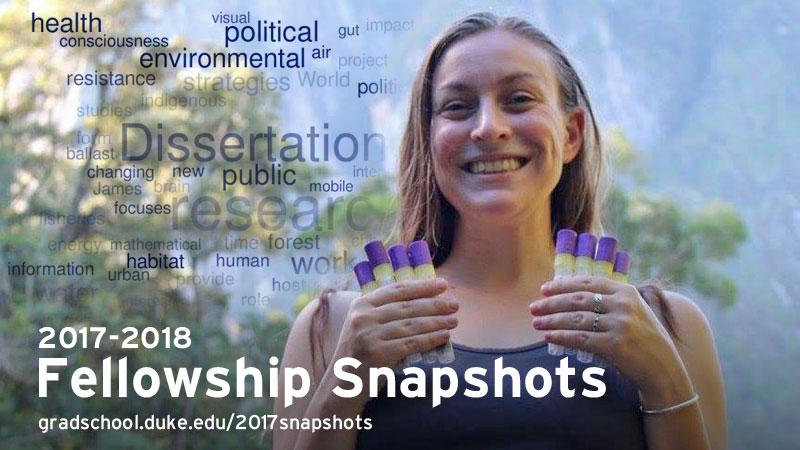
Fellowship Snapshots 2017

For the 2017-2018 academic year, the Duke Graduate School awarded 366 competitive fellowships to incoming and continuing Ph.D. students, totaling more than $5.4 million. Here is a look at some of the recipients and their research.
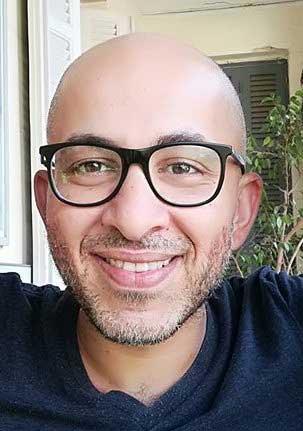
Yakein Abdelmagid
Cultural Anthropology
Katherine Goodman Stern Fellowship
My dissertation manuscript, “Independent Music after Revolution: Creative Labor, Publics, and Politics in Cairo,” is an ethnographic study of the independent music movement in urban Cairo after the 2011 revolution to unravel how youths navigate authoritarianism. This ethnography draws on oral history and participant observation among young professional musicians, music producers, and entrepreneurs, investigating the creative economies of an alternative music scene shaped by digital technologies.
Despite the seeming failures of the Arab Spring, the dissertation links theories of alternative aesthetics and political economy to discern the forms of revolutionary politics that emerge in the everyday life of a music industry. I propose that this independent music scene is a microcosm that reveals the structural crises in authoritarianism generated by the changing media economies of the digital age, and therein the transformative potential of youth countercultures that are uncontainable by the state.
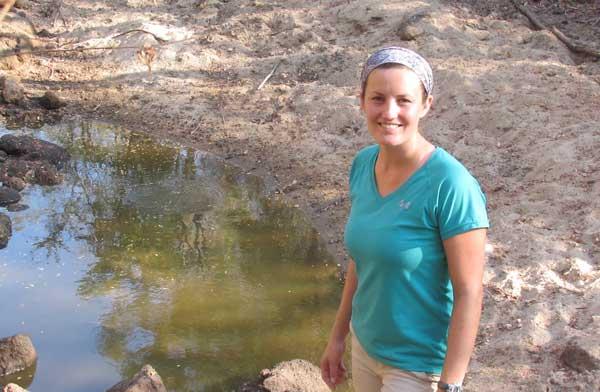
Caroline Amoroso
Evolutionary Anthropology
International Dissertation Research Travel Award
A central question in the study of our closest relatives, the primates, asks how the availability and scarcity of food resources has shaped primate behavior. But less attention has focused on how water availability—and water scarcity—shape primate behavior. This is surprising because primates sometimes live in very dry habitats where water is likely very important.
For example, the red-fronted lemurs that I study live in a deciduous forest in Madagascar where rain does not fall for nine months. The lemurs have to make long treks from the areas where they sleep and eat to reach the only sources of water in their habitat: standing waterholes at the bottom of a riverbed, which get more and more dry as time passes since the last rain.
I have been studying how the lemurs move through their habitat relative to the location of water sources using GPS collars. It seems that the lemurs prefer certain waterholes over others, and I am trying to understand which characteristics of their favorite waterholes makes them so preferred. Additionally, I conducted an experiment where I placed water sources in new locations in the forest for the lemurs, and observed that some of the lemurs stopped traveling to the riverbed to drink. These results suggest that water may be a very important factor in driving the behavior of these primates.
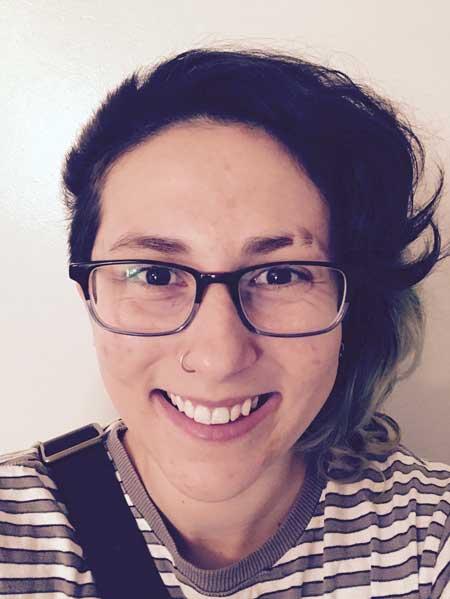
Grace Anderson
Molecular Cancer Biology
Jo Rae Wright Fellowship for Outstanding Women in Science
In the last decade there has been an explosion of genomics data that has allowed us to determine the genetic events that drive various cancers. As a result of this, drugs were developed that could specifically block these genetic drivers, deemed “targeted therapies”. Unfortunately, resistance to these targeted therapies is nearly inevitable. Thus, there is a need to systematically define and overcome intrinsic and acquired resistance in cancer. Additionally, for cancer types that have no clear genetic drivers, development of novel strategies for targeting these cancers is needed.
My research has used functional genomics approaches, genetic and pharmacological, as well as detailed-mechanistic follow-up, in order to define and solve these fundamental problems. To date, we have been able to overcome intrinsic resistance in breast cancers treated with PI3K pathway inhibitors. We have outlined many strategies for targeting KRAS-driven cancers using genetic screening technologies. Further, we have worked to show that there are therapeutic modalities that can select against multiple mechanisms of acquired resistance in cancer. Lastly, I am working to demonstrate that dysregulated mitochondrial dynamics are a targetable feature of human tumors, an especially critical finding for cancers that lack genetic drivers.
Ivana Bago
Art, Art History and Visual Studies
Katherine Goodman Stern Fellowship
In my dissertation, “Post-Yugoslav Generation: Art, History and Theory at the Unidentified Grave of Yugoslavia,” I write about a generation of post-Yugoslav artists and scholars who take the history of Yugoslavia and its violent dissolution as topics of their work.
Yugoslavia was at the center of the disasters and political strivings of the 20th century, from the 1914 assassination of Franz Ferdinand in Sarajevo, the anti-fascist resistance during World War II, the anti-Stalinist socialist state and its prominent role in the Non-Aligned Movement, to the war-ridden post-communist transition. I claim that by turning toward their common past, the post-Yugoslav generation of artists and intellectuals is not merely intervening in the ongoing constructions of largely anti-Yugoslav and anti-communist histories, but is in fact generating anew the tradition of “Yugoslav aesthetics,” which I present as a locus of leftist and anti-colonial politics in twentieth-century art and literature.

Andrew Ballard
Political Science
Bass Instructional Fellowship
I study the interplay between legislators, parties, and constituents. Legislators use public statements and votes to show their loyalty to their constituents and their party, but what happens when the party and the voters disagree? How might parties entice members to vote against their electoral interests? When do electoral interests outweigh members’ partisan affiliation? How do voters respond to the signals sent by their representatives? Lawmakers benefit from their party, but their own incentives and preferences (and those of their constituents) sometimes differ dramatically from the party line. What do legislators do when their party and constituents disagree?
In my dissertation, I show how party leaders make side payments and threats to cross-pressured members and work to convince them that their fellow partisans will support the party’s position (since members who stick their necks out for the party don’t want to be alone in doing so). To help encourage coordination, party leaders often push members to make public statements to pre-commit them to vote a certain way.

Max Beninger
Philosophy
Bass Instructional Fellowship
My research focuses primarily on consciousness and its neural underpinnings. At present, there are two competing views concerning the neural correlates of consciousness. On the one hand, there is the globalist view, which claims that consciousness arises when information is globally broadcast to higher-order areas of the brain, such as the prefrontal cortex. On the other hand, there is the localist view, which claims that consciousness arises in early sensory cortices (and hence does not require information to be globally broadcast).
In my work, I use results from psychology and neuroscience to try to arbitrate between these two views. In particular, I defend the globalist view of consciousness, arguing that it makes the most sense of empirical data. I also consider the possible implications that this view might have for other philosophical discussions relates to consciousness. For instance, if the globalist view is right, what would this tell us about the contents of consciousness? Does the globalist view entail that there are abstract, non-sensory conscious thoughts?

Eladio Bobadilla
History
Bass Instructional Fellowship
Ottis Green Fellowship
I research and write about the modern immigrants’ rights movement. Specifically, I interrogate the process by which Mexican Americans, who in the early 20th century, were deeply concerned about a “wetback invasion,” came to see immigrants’ rights as essential to their own social and political advancement after 1970. The project, which also pays significant attention to nativism and its role in sparking a robust immigrants’ rights movement, is essentially an intellectual history of immigration policy that draws knowledge from archival materials, government sources, and oral histories.
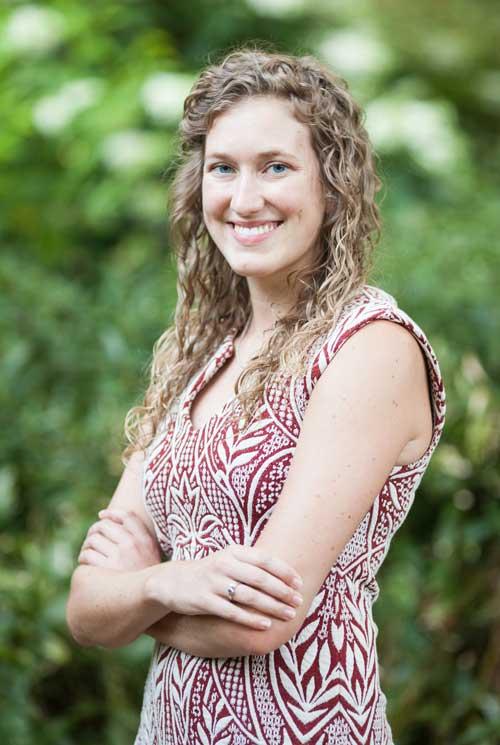
Nadia Brashier
Psychology and Neuroscience
Phillip Jackson Baugh Fellowship
Popular culture depicts older adults as slow, irrational, and forgetful, when they are represented at all. Psychologists also tend to see the glass as half empty, with an emphasis on the “declines” and “deficits” that come with age. Instead, my research focuses on the strengths accumulated over a lifetime and how they improve the quality of older adults’ judgments and memories.
Thanks to the Phillip Jackson Baugh Fellowship, I will have the independence to lead several aging projects during my final year of graduate school. My dissertation identifies “shortcuts” for judging truth, and how their use changes over the lifespan. So far, I have found that older adults draw on their impressive knowledge bases even they could fall back on heuristics. Another line of work harnesses older adults’ unique social goals (e.g., desire to convey information to younger generations) to improve their memories. This work has important implications for a graying America, where the US population of older adults will double by 2050.

Christopher Campbell
Biology
Bass Instructional Fellowship
I am an evolutionary biologist studying lemur speciation at the genomic level. In short, I am interested in using lemur genomes to explain how species form and why they are maintained. Additionally, working in Madagascar provides vital information for conservation efforts. Highlighting both lemur population changes over time and areas of high species richness can inform crucial conservation targets and goals.
More specifically my thesis focuses on the over 20 species of Mouse Lemur found in natively in Madagascar (one of which is kept here at the Duke Lemur Center). I am studying the rate of novel mutations in these species, in the hopes of more accurately estimating species ages. It will also shed light on how the mutation rate differs within primates. I am also studying how change in families of genes, specifically those involved in sperm formation. These changes provide insight into what causes new species to form and diversify, one of the basic questions of evolutionary biology.
I received a fellowship to teach a course of my own design, Methods in Computational Biology and Genomics, to upper level undergraduates. In doing so I aim to provide students with the tools and opportunity to conduct a genomic analysis on their own while also developing my own skills as a teacher.

Mandy Cooper
History
David M. Rubenstein Rare Book & Manuscript Library Internship (Research Services)
My dissertation explores the relationship between family networks and the developing institutions of federal and state government in the United States between the Revolution and the Civil War. Focusing specifically on several prominent families based in North Carolina and Virginia, but whose networks extended throughout the country and stretched across the Atlantic, I argue that work related to the presence and performance of emotion—what I refer to as affective labor—was inseparable from the work that drove economic ventures and political fortunes.
These dynamics had wide-reaching public implications, turning political differences into intimate, potentially volatile conflicts. Women played a central role in business and politics through affective labor, which solidified the familial bonds necessary for credit. Men not only benefitted from such labor but also engaged in it themselves. The implications were particularly apparent in the realm of internal improvements, where well-connected men used the networks created through affective labor to access state government and shape public policy around their own interests. The dynamics that supported these families collapsed distinctions the scholarship has taken for granted, situating the “public” world of the economy and policy in the domestic realm and highlighting women’s central role in the “male” world of property and partisan politics.
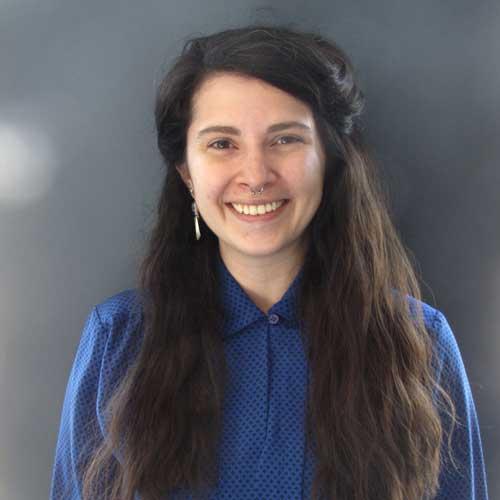
Liz Crisenbery
Music
James B. Duke International Research Travel Fellowship
My dissertation, “Opera in Fascist Italy: Romanità, Reception, and Masculinity in Mussolini’s Third Rome,” examines reception and representations of masculinity in four operas by Italian fascist composers during the height of the fascist regime, from 1935-1941.
The operas include Pietro Mascagni’s Nerone (1935), Gian Francesco Malipiero’s Giulio Cesare (1936), Ottorino Respighi’s Lucrezia (1937), and Ennio Porrino’s Gli Orazi (1941). I explore the connection between music, politics, and gender through an examination of each opera’s premiere, drawing upon public reception through newspaper reviews, periodicals, and promotional materials. I want to highlight the paradox of creative musical freedom in this specific totalitarian context, as a plurality of musical styles were promoted and accepted by the fascist regime.
Xiaoxing Cui
Integrated Toxicology and Environmental Health
International Dissertation Research Travel Award
Asthmatic children are a vulnerable and susceptible population to the adverse health effects of air pollution. Asthma exacerbation can be introduced by exposure to air pollution and allergens. The World Health Organization estimated that 92 percent of the world’s population were living with outdoor air pollution that exceeded WHO limits.
While the ultimate solution is to control emission sources, exposure-reduction strategies at the individual level are in immediate needs, especially in smog-laden cities of developing countries. As children typically spend around 80 percent of their time indoors, improvement of indoor air quality has been proposed as a solution to alleviate the adverse health impacts of air pollution.
My study aimed to investigate whether purifying indoor air can bring health benefits among asthmatic children living in environments with high levels of outdoor air pollution. Forty-three children aged 5-13 with well-controlled intermittent asthma living in Shanghai, China, were recruited. Each participant used an air-filtration device for two weeks and used a placebo air filtration device for two weeks. The sequence was randomized and scheduled with a two-week washout period in-between. Lung function, respiratory oxidative stress, asthma severity, as well as biomarkers in nasal fluid, saliva, exhaled breath condensate and urine were evaluated. We hope our findings can provide reference for asthmatic children living in similar environments.
Michelle D’Aguillo
Biology
Domestic Dissertation Research Travel Award
My research challenges the assumption that plants are passive components of the environment with little control over the environmental conditions they experience. I am interested in how the timing of developmental transitions (for example, germination, leaf-out, flowering, and fruit ripening) can be a form of habitat selection in plants. Through changes in the timing of these developmental events, plants are able to modify the environment they experience, which will greatly affect survival and fitness.
My research specifically investigates how variation in seed dormancy and germination cues affect the timing of germination, and how the timing of germination affects seedling survival and lifetime fitness. My results to date show that plants can engage in a form of temporal habitat selection through the timing of germination, and thus have some ability to control the environment experienced by seedlings.
Cari Ficken
Ecology
Jo Rae Wright Fellowship for Outstanding Women in Science
My research examines how plants interact with each other under harsh environmental conditions, particularly after fires. I work to understand the strategies by which plants compete for the same resources in the soil, and how these strategies allow for diverse communities of plants we see in nature. I also work to understand how, by affecting which plants persist and in which proportions, these resource acquisition strategies influence ecosystem functions, such as carbon and nitrogen cycling.
In this way, my research uses plant physiological responses to the environment to understand large-scale ecological phenomena. This is important because environmental conditions are changing, and it is difficult the consequences of a changing environment on communities and ecosystems. By linking between small processes and large patterns, my goal is to develop a predictive framework for understanding the repercussions of a changing environment on the health and functioning of our ecosystems.
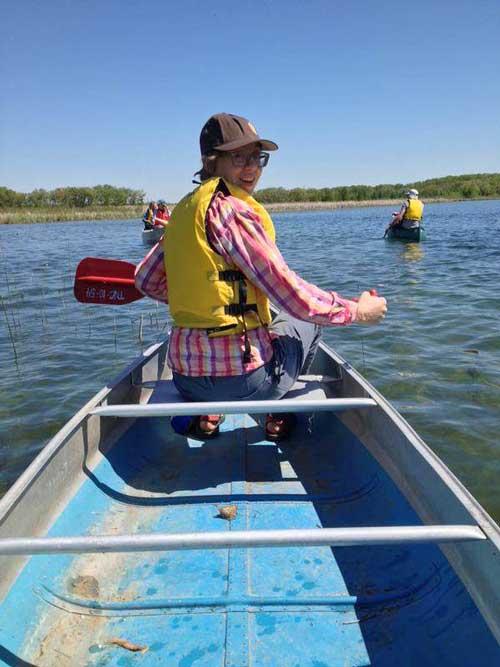
Megan Fork
Environment
Bass Instructional Fellowship
Through my dissertation research, I seek to understand how the rivers and streams in cities function. I study an urban catchment here in Durham, NC to ask how waterways that we design and engineer (roof gutters, roadside gutters, and stormwater pipes, for example) collect and process leaves into dissolved matter that flows into streams and rivers during rain storms. Conceptualizing these engineered headwaters as parts of the stream network (with ecological function beyond simply moving water) gives us a better understanding of sources of nutrients and other constituents that enter our streams and rivers and flow into our drinking water supplies.
As a Bass Fellow, I’ve designed and am teaching a course to Duke undergraduates about uncertainty in climate models, measurements, and projections as well as how we can effectively communicate about these to the public and policy makers.
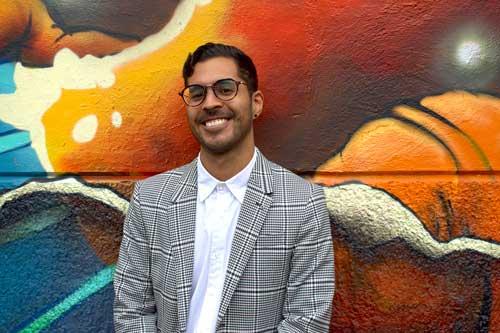
Robert Franco
History
James B. Duke International Travel Fellowship
Issues of sex and sexuality have been in an uneasy, if not antagonistic, relationship with the revolutionary politics of the Mexican Communist Party and other parties of the Marxist and nationalist left since their foundation. My dissertation, “Revolution in the Sheets: The Sexual Politics and Intimate Practices of the Mexican Left,” historicizes this divide by examining scandalous explosions of homophobia and hostility towards sexuality among leftist political parties in Mexico throughout the 20th century.
I argue that these moments of visceral intolerance cannot solely be explained through notions of plain conservatism or subconscious repugnance. Rather, the contingent, and oftentimes strategic, rejection of sexual politics and the deployment of intolerance as a political tool encapsulated larger social anxieties and carried symbolic weight in the face of political upheaval. Furthermore, such polemics were related to the intimate practices in the Mexican Left, for the surveillance and policing of sexuality were constitutive of a broader set of debates about the relation of leftist militancy to private life, morality, and behavior.
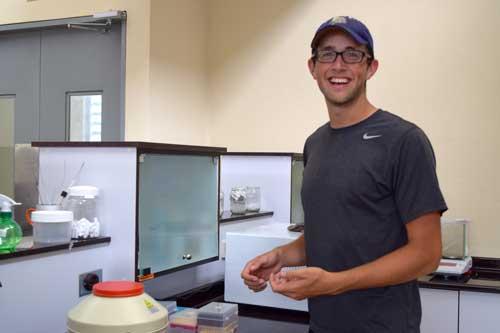
Billy Gerhard
Civil and Environmental Engineering
Graduate Student Training Enhancement Grant
According to the World Health Organization, the propagation of antibiotic resistance is the greatest threat to our way of life in the 21st century. It is imperative that we understand the global scope of antibiotic resistance and its potential avenues for global proliferation. One possible avenue is in ballast water. Ballast water is used to provide stability to large ships and is often loaded or unloaded in ports along a voyage route. Ballast water has long been known to be a vector for the introduction of invasive species with notable examples of the Zebra Mussel to the Great Lakes and Asian Kelp to the West Coast of the United States. Despite this evidence, research to examine the microbial community of ballast water is still in its relative infancy.
My dissertation research examines the ballast water microbial community—especially the presence of antibiotic resistance and pathogens—with the goal of identifying effective treatment strategies to mitigate risks to human and environmental health. I plan to partner with industry collaborators to include microbial data in existing hydraulic modeling systems that will identify critical ports along the global shipping network and best practices for ballast treatment during voyages. These models will provide policy-makers with information to better prevent the spread of antibiotic resistance between ports via ballast water.
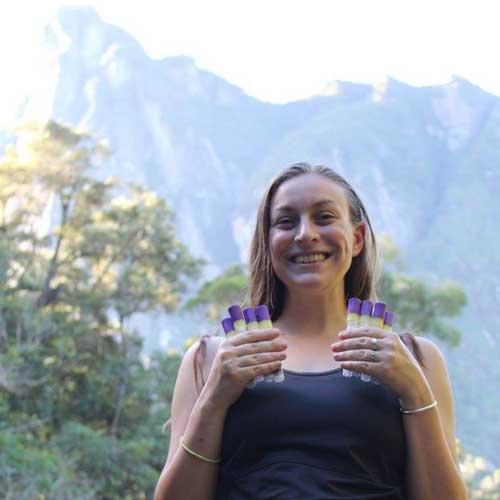
Lydia Greene
Ecology
E Bayard Halsted Scholarship in Science, History, and Journalism
Lemurs are primates from Madagascar, and due to intense habitat loss, are among the most endangered vertebrates on Earth. Because lemurs are critical to ecosystem health in Madagascar, I focus my research on topics that could help inform conservation strategies. Specifically, I study lemur gut microbiomes and I specialize in the leaf-eating species. Leaf-eating lemurs are some of the most fragile lemurs: They are tricky to keep healthy in captivity, sensitive to habitat disturbance in Madagascar, and are often the first species to disappear from a habitat following perturbation. As a system that converts food to energy and wards off pathogens, an improved understanding of the lemur gut microbiome could influence how we care for and manage these endangered primates.
I therefore designed a suite of projects to explore how lemur gut microbiomes respond to changes in diet or habitat quality, as well as relate to whether hosts live in particular habitat types (e.g., rainforest vs. dry forest). Practically, this means I collect a lot of lemur feces. You can usually find me at the Duke Lemur Center following sifakas in the forest waiting for them to do their business, or in Madagascar, convincing their wild counterparts to donate their excrement to science.
Hopefully my work will inform husbandry and conservation strategies applied to captive and wild populations of leaf eaters, as well as add to our understanding of the gut microbiome’s role in keeping us all healthy.
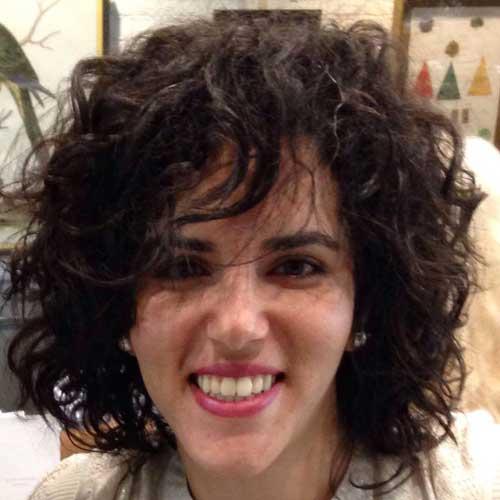
Farah Hegazi
Environmental Policy
James B. Duke International Research Travel Fellowship
My primary research focuses on the challenges that governments in the Middle East and North Africa face in delivering water and sanitation services to unserved and underserved areas, and how to overcome those challenges. More specifically, my dissertation aims to explain the criteria that the Egyptian government uses in prioritizing and choosing which districts receive services, and whether and how these criteria have changed over time.
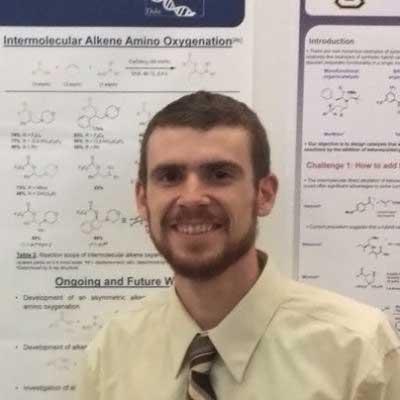
Brett Hemric
Chemistry
Shaffer-Hunnicutt
My work centers around discovery of novel methods to assemble molecules that may be of importance in pharmaceutical, agricultural, or chemical fields. Specifically, I have work on ways to incorporate nitrogen into molecules to create compounds that would not be accessible by currently-available methods. To accomplish this, I have utilized the opening of carbon-carbon double bonds (alkenes) with a unique nitrogen source that alters the expected properties of nitrogen atoms. Thus far, we have utilized our strategy to publish two new methods for assembly of nitrogen and oxygen-containing molecules and we have two additional methods currently being developed.

Gray Kidd
History
Aleane Webb Dissertation Research Fellowship
My dissertation deals with the evolving dynamics of interclass and interracial interactions between a literate minority (letrados or bacharéis) and largely nonwhite plebeians (the povo) in the port city of Recife, Pernambuco, Brazil. Unique in its focus on the creative works of Recife’s letrados, whose products cross written, visual, and aural forms, the project deploys an innovative “history in images” oral history methodology to investigate evolving conceptions of urban space, sociability, and the “popular.” Beginning with a reassessment of the sociopolitical effervescence of the late 1950s, I drive my analysis through the final decade of Brazil’s military regime, when “red Pernambuco” once again emerged as a cultural innovator and central actor in the national struggle that restored democracy in 1985.
Carolyn Laubender
Literature
Bass Instructional Fellowship
My research and teaching analyze the role that theories of childhood have played in defining and producing the modern 20th century “self.” In my current project, “Child’s Play: Psychoanalysis and the Politics of the Clinic,” I take the writings of mid-century European child analysts as my object to consider how the psychoanalytic clinic became a site of experimental political action. Taking my inspiration from formative scholarship in modernist studies and queer theory on the figure of the child, I contend that interwar and postwar European psychoanalysts became formidable political actors precisely through their clinical work with children. In this way, a sub-specialty performed largely by women, and designed for children, transformed the privatized space of the clinic into a proto-political laboratory where psychoanalysts mapped subjectivity—and especially gender and sexuality—in concert with the changing geopolitics of Europe.

Yating Li
Environmental Policy
Bass Instructional Fellowship
Residential consumption has been rarely examined previously due to lack of data, though it alone accounts for one-third of China’s electricity demand growth over the next 25 years. In the past two years, I have been investigating the drivers of residential electricity demand using micro data. How much will the electricity usage change as income grows dramatically in China? Is the growth mainly due to more intense utilization of existing appliances or due to the purchase of new appliances? What is the impact of climate change on electricity use?
The first essay of my dissertation estimates and forecasts China’s electricity consumption of urban households using national survey data. The second essay analyzes the impact of climate change on residential electricity use using daily meter data from the grid company. Better understanding of climate change impacts helps us design mitigation policies through improved estimates of the social cost of carbon. In the third essay, I plan to study the fiscal and development impact of wind and solar investment in China, as renewables account for more than 25 percent of total electricity consumption and will play an important role in China’s transition to green economy.
I love teaching! In summer 2017, I taught microeconomics for the students enrolled in the master of environmental policy at Duke Kunshan University. With the Bass Instructional Fellowship, I wish to further improve my teaching skills.

Kevin Liang
Electrical and Computer Engineering
E. Bayard Halsted Scholarship in Science, History, and Journalism
Artificial Intelligence (AI), as one of the driving forces behind the ongoing so-called “Fourth Industrial Revolution,” is rapidly changing how we interact with the world around us today. While we are (fortunately) still a ways off from building any sort of sentient Terminator-style Skynet, AI is already forming the core of intelligent digital personal assistants, translating our words between languages, recognizing the content of our personal photos, and defeating mankind’s best at chess and Go.
My research interests lie in deep learning, especially within the contexts of computer vision and reinforcement learning. Over the past year, I have collaborated with the Transportation Security Administration to build intelligent systems that automatically detect threats in carry-on baggage at airport security checkpoints. Using deep learning algorithms for object detection, any firearms, sharps, or explosives in scanned images are bounded with a box by the computer and identified as dangerous. While still in its initial stages, this technology may soon be implemented in airports across the country.
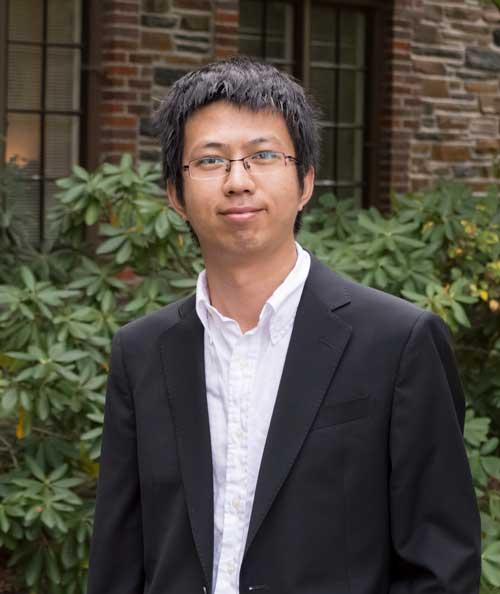
Yingjie Liu
Civil and Environmental Engineering
Domestic Dissertation Research Travel Award
My research interests lie in developing advanced mathematical model for fracture problem and robust numerical methods for partial differential equations. As a computational scientist, I enjoy building and understanding computational tools to solve challenging science and engineering problems. In particular, I have been involved in several material science projects where I construct novel algorithm to help the experimentalists gain more insights on the underlying physics of the advanced materials.
In my collaboration with Idaho National Lab, I developed a robust Nitsche-based algorithm to handle the contact between nuclear fuel and cladding. I also proposed computational models for the fracture of particulate rafts and begostones. The work on the fracture of particulate rafts are selected as the front page of scientific journal “soft matter” and reported by Duke Communication. To handle the modelling difficulty of complex geometry, I developed a robust interface method to separates the physical and computational domains. This method has gain considerable attention and grows to a hot topic in the community of computational mechanics.
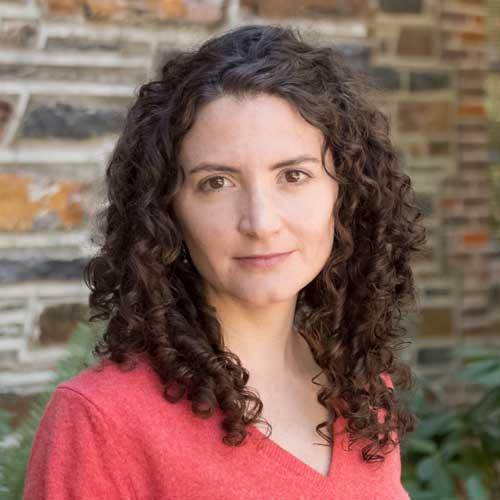
Candela Marini
Romance Studies
Evan Frankel Fellowship
With the support of the Evan Frankel Fellowship, I’m finishing my dissertation project entitled “An Album of Violence: Visualizing the Wars of Territorial Expansion in Chile and Argentina (1860s-1880s).” It examines the visual rendering of the military and extermination campaigns by which Chile and Argentina aggressively expanded their territorial reach and subjugated their indigenous populations.
The “Pacification of the Araucanía” (1861-1883), the Triple Alliance War (1864-1870), the “Conquest of the Desert” (1875-1885), and the War of the Pacific (1879-1884) were the main military advances that defined the geopolitical shape and modernizing projects of these recently independent states. Tellingly, these moments were captured by one of the new technologies of the time: photography. Comparing the different photographic accounts of these four episodes, in an active dialogue with concurrent visual and print media, I trace and analyze the changing photographic language regarding war and violence, and how it gradually dovetailed with the nation-building projects of these two countries. Institutionalized as the ultimate chronicler of objective truth, the photographic camera played a key role in defining what constituted a “war” on one hand, and a non-violent civilizing process on the other.
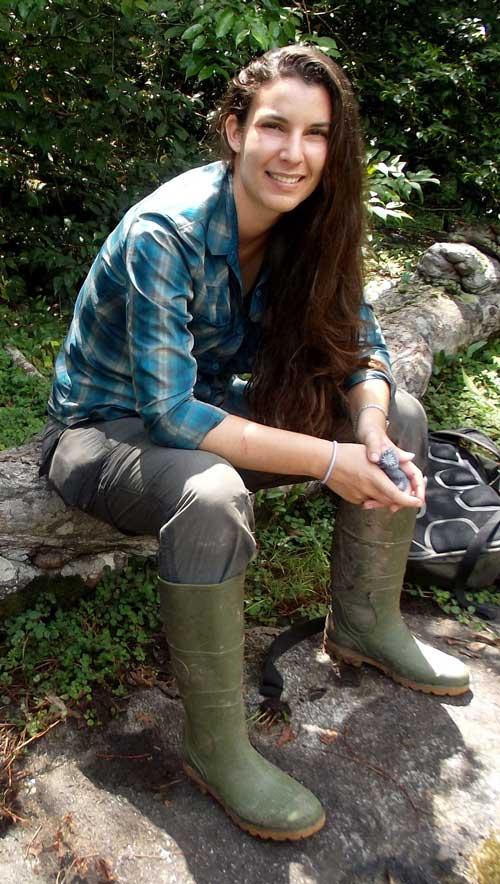
Amelia Meier
Environment
James B. Duke International Research Travel Fellowship
The African forest elephant (Loxodonta cyclotis) faces extinction. Poaching is the principle cause of mortality, devastating forest elephant populations to the point of extirpation. As part of the Poulsen Lab, we are creating innovative conservation solutions based on scientific research to proactively protect the remaining forest elephants. We collaborate with Gabon’s Agence National des Parcs Nationaux to track GPS-collared elephants gathering critical information to predict the spatio-temporal patterns of forest elephant movement, thereby empowering park managers to actively patrol where forest elephants are located and stem the loss of forest elephants in Gabon.
For my dissertation, I am using both satellite and genetic technologies to specifically investigate forest elephant social behavior and habitat preference to accurately determine the ecological and environmental conditions that promote large groups of elephants. This concrete data will be spatially modeled to predict elephant hotspots over time.
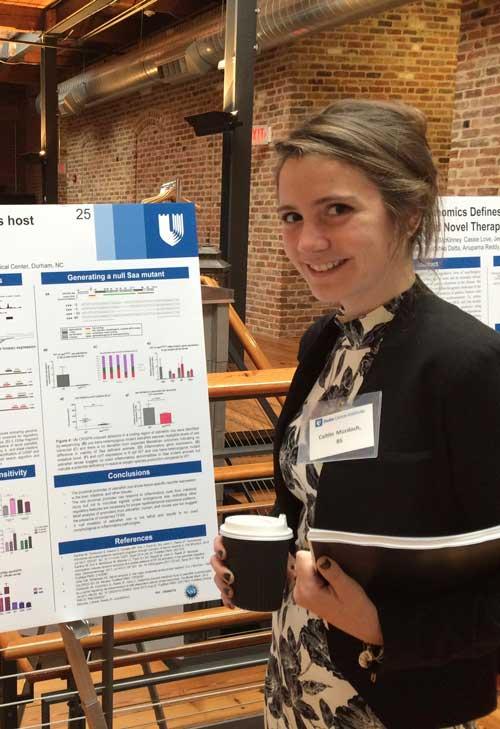
Caitlin Murdoch
Molecular Genetics and Microbiology
Bass Instructional Fellowship
I am a fifth-year Ph.D. candidate in John Rawls’s lab in the department of Molecular Genetics and Microbiology. In the Rawls lab, we use the zebrafish to study how the gut microbiota—groups of microorganisms that colonize the intestinal tract - influence host physiology.
For my graduate research, I am interested in understanding the impact of these microbial communities on host innate immune responses with a particular focus on neutrophils. Neutrophils are a type of professional phagocytic immune cell that play critical roles in acute inflammation. In humans, they are the most abundant white blood cell and are essential in clearing microbial infections.
My work is largely focused on a highly conserved secreted host factor, Serum amyloid A (Saa), that is potently induced by the gut microbiota and inflammation in many vertebrate species including zebrafish. Interestingly in humans, Saa is a salient biomarker for many chronic inflammatory conditions yet its function is poorly defined. Utilizing genetic approaches coupled with high resolution live imaging in zebrafish, I have found that Saa influences host neutrophil biology acting as an anti-inflammatory factor. Through this work, I am uncovering novel insights into Saa’s effects on neutrophil behavior, activation, and abundance in both health and disease.

Zhao Ni
Nursing
International Dissertation Research Travel Award
I am study using mobile health technologies to prevent cardiovascular disease. Cardiovascular disease is the world’s number one killer. Every year it kills more than 17 million deaths. Mobile health technology (mHealth) is defined as the use of portable electronic devices with software applications, known as apps, to provide health services and manage patient information.

Sasha Panaram
English
Bass Instructional Fellowship
My dissertation explores fictional and critical renderings of the Middle Passage by black women artists in black diasporic literature and culture. I argue that by attending to how black women novelists, poets, religious figures, and literary critics from disparate parts of the diaspora – Barbados, Tobago, Canada, and the United States – reinscribe the Middle Passage in their works they not only offer descriptive accounts of this transoceanic crossing. Instead they provide strategies for inhabiting the earth in the aftermath of brutal violence. Drawing on literary studies, performance studies, and visual culture, I show how together these artists develop a more capacious language for describing the Middle Passage – that which has no beginning, middle, or end; that which is not confined to a narrow strait but whose nomenclature suggests otherwise.
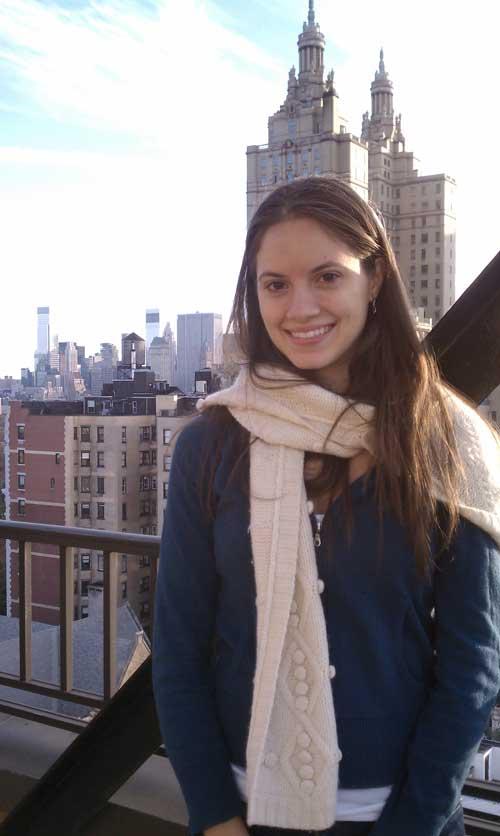
Michele Lanpher Patel
Psychology and Neuroscience
Aleane Webb Dissertation Research Fellowship
During my work as a doctoral student in clinical psychology, I’ve been interested in studying how to treat and prevent obesity using behavioral strategies. As a member of the Duke Global Digital Health Science Center, I’ve learned about the utility of mobile technologies to deliver interventions for weight loss. These include tools such as mobile applications, text messaging, interactive voice response (IVR) technology, smart electronic scales, and wireless activity monitors. Technology-based interventions are able to reduce barriers to treatment (e.g., time and transportation constraints) and have greater dissemination potential than traditional weight management interventions delivered in-person.
My dissertation examines how self-monitoring (i.e. tracking) via a mobile app can be optimized for weight loss. I am conducting a research study with 105 adults who are randomized into one of three groups. Participants use MyFitnessPal, a popular commercially available mobile app, for self-monitoring diet and/or body weight. Ultimately, I hope to learn more about how to promote engagement in technology-based interventions for obesity and other health behaviors.
Claire Payton
History
Rubenstein Internship at the Hartman Center for Sales, Advertising and Marketing History
My research explores the urban and environmental history of Haiti in the 20th century. Port-au-Prince, the Haitian capital, experienced a period of dramatic urban growth during the authoritarian Duvalier dictatorship. By putting these two historical dynamics into dialogue, my research offers a valuable case study of the political production of environmental vulnerability. I study the political, social, and geographical factors that have made the city so vulnerable to natural disaster--an increasingly urgent question as environmental crises around the world suggest that Port-au-Prince is a harbinger of a possible future confronting cities around the world.
Kaila Pianalto
Program in Cell and Molecular Biology
Bass Instructional Fellowship
In my dissertation research, I have been interested in asking questions about how pathogenic organisms interact with their environments. Specifically, I want to know how pathogens sense that they are in the host versus their natural environment, and how, once they “know” they are in the host, these organisms adapt in order to survive and cause disease.
In Andrew Alspaugh’s lab, I have specifically been studying how the opportunistic fungal pathogen, Cryptococcus neoformans, regulates many aspects of its cell biology, such as its cell wall and protective capsule, through its alkaline pH sensing pathway. Increased pH is one of the major signals for this organism that is in a host environment, and this fungal-specific pathway is crucial for Cryptococcus to initiate the changes necessary to survive in the harsh host environment. I have identified a novel activator of the pathway in Cryptococcus neoformans, and am currently working to understand how this protein regulates pathway activation. These studies will help us to better understand how this important fungal pathogen alters its phenotype during infection.

Yahn Wagner Pinto
Music
Aleane Webb Dissertation Research Fellowship
I have been working, among other things, on the concept of interactions between music and environment through a music composition for contrabass clarinet and tape. The intention is to bring to awareness possibilities of interaction with our environment that are not usually in our perceptual scope. People tend to ignore an important part of the stimuli they constantly receive from their surroundings. Sometimes we ignore signals that would warn us about some danger. Other times we ignore the beauty, the art, the sun, and also, we tend severely to ignore other people. Thus, this project will explore the sounds of the environment that are usually not heard, bringing them to the surface. For the tape, the project proposes mainly to record and manipulate some sounds of North Carolina, in natural and urban areas. Sounds of an almost immobile lake, insects, the train rail, the floor of a commercial building, and the indistinct sound of a crowd are some kinds of environmental sounds intended to be used in this composition.
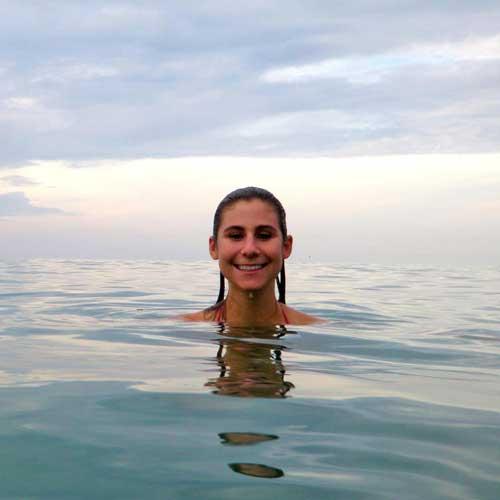
Anastasia Quintana
Marine Science and Conservation
James B. Duke International Research Travel Fellowship
How do we sustain collapsing fisheries in the wake of globalized markets, increasing demand for seafood, and persistent poverty in rural fishing communities? One contentious solution has been the no-take marine reserve. No-take marine reserves, on average, do increase fish size and diversity – but they can also lead to disempowerment, disenchantment, and noncompliance. Whether they are an effective fisheries management tool is hotly debated.
I contribute to this debate with my dissertation. A rising fourth-year Ph.D. student at Duke University, I am part of the Basurto lab, which studies the social side of marine conservation and fisheries science. As a James B. Duke International Research Travel Fellow, I will closely examine the social side of a novel type of marine reserve called the Fishing Refugia. The Fishing Refugia are non-permanent marine reserves in Mexico, housed in the fisheries agency rather than the conservation agency. I will travel to one case of the Fishing Refugia in Baja California Sur, Mexico, where a network of small reserves have been created in the Sea of Cortez. To what extent has the process been participatory? To what extent are the Refugia adaptive? Using in-depth interviews, observation, and ethnographic methods, I will examine the social effectiveness of the Fishing Refugia. With a better understanding of this policy experiment, I hope to contribute to healthier fisheries and stronger communities.
David Rambo
Literature
Katherine Goodman Stern Fellowship
My teaching and research at Duke have combined close readings of philosophical texts and literary, visual, and computational fictions with studies of how the aesthetics of technical media explain and expand the limits of cognition, embodiment, and society. This year I am finishing my dissertation, which is titled “Technics Before Time: Experiencing Rationalism and the Techno-Aesthetics of Speculation.” Over its eight chapters, I explore the concept of “technicity,” which is philosophy’s term for what is essential to technical processes and objects.
In short, I argue that technicity refers to the creation of novel phenomena by way of modifying the material grounds of those phenomena. Insofar as human experience and knowledge are technically constituted, this entails a fundamental openness to change in what it means to be human and how to live, think, and feel. In order to illustrate and explore this technical superposition of modifications, I examine electric guitar effects pedals, tabletop role-playing games like Dungeons & Dragons, and the coded causality of blood and gore in computer games. One result of my dissertation is both to provide the theoretical resources for, and to exemplify, transforming the humanities into a platform for crossing boundaries and putting diverse literacies and understandings into contact.
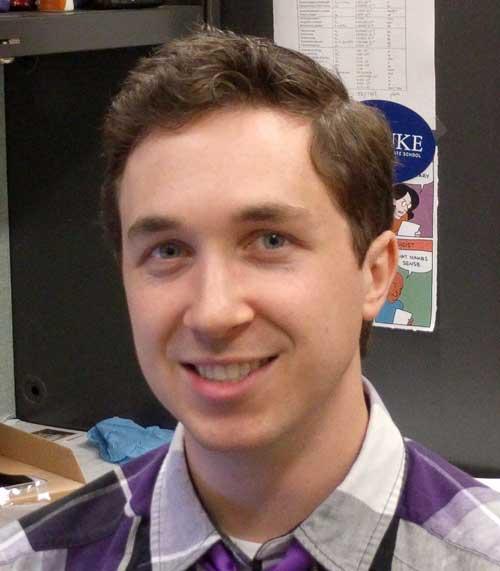
Andrew Seredinski
Physics
Bass Instructional Fellowship
My research in Dr. Gleb Finkelstein’s lab focuses on the behavior of electrons in graphene, a one-atom-thick layer of carbon. I cool tiny squares of graphene with dimensions about 1/100th the thickness of a human hair to temperatures close to absolute zero (below minus-459 degrees Fahrenheit) and study different quantum mechanical effects.
My work also involves superconductors, materials which carry electrical current with no resistance below a certain temperature. When you put a nanoscale piece of graphene between two superconductors, the graphene is “proximitized” and becomes a superconductor itself. I then apply a high magnetic field to these superconductor-graphene structures and look at the interplay between superconductivity and a phenomenon known as the quantum Hall effect in which a magnetic field forces currents to move only along the edges of a sample.
There is much to be done to understand on a physical level how superconductors, graphene, and high magnetic fields play together experimentally. Looking toward the future, there are theoretical predictions that a supercurrent flowing through a quantum Hall edge channel could one day be used to form an excellent qubit, the building block of a quantum computer.

Andrew Steck
Economics
Ottis Green Fellowship
I am an economist, studying the relationship between innovation and industry dynamics. My primary research focuses on how economic actors are able to learn from each other, and how the potential for this social learning shapes investment decisions. An empirical application of my work examines the pattern of shale oil drilling in North Dakota’s Bakken formation. This industry has witnessed massive productivity growth over the last ten years as drillers have improved their hydraulic fracturing techniques. My research points to the possibility of learning from other drillers as a significant factor in the timing of drilling decisions made; when this factor is taken up to the industry-wide level, it has implications for how quickly the industry as a whole advances up the learning curve.
*Stephanie Stefanski
Environmental Policy
International Dissertation Research Travel Award
My dissertation, “Property Rights-Based Management in Argentine Fisheries: Evaluating Institutional Design and Social and Economic Outcomes,” is motivated by current trends in the social sciences literature to analyze how rights-based management design influences trade-offs between distributional equity and economic efficiency objectives.
Relatively recently, developing countries began adopting rights-based management regimes, often in the form of individual transferable quotas (ITQs), to recover collapsed fishery stocks. ITQs are market-based approaches that address the tragedy of the commons by assigning property rights to natural resources. An ITQ is an allocation of a proportion of the total allowable fishery catch for a commercial fishery stock. This allows fishers to buy and sell the right to catch a specified quantity of fish, incentivizing them to protect the resource share as their own.
ITQs theoretically generate economic benefits, but the social outcomes are less understood. For example, ITQ programs may not equitably distribute economic rents and could disadvantage small vessel owners. In 2010, Argentina adopted an innovative approach to ITQs by embedding social objectives into program design. Over the summer, I conducted structured, quantitative surveys with fisheries stakeholders, including business owners and national and provincial fisheries authorities, to evaluate to what extent the outcomes of the program align with the intended social and economic goals.
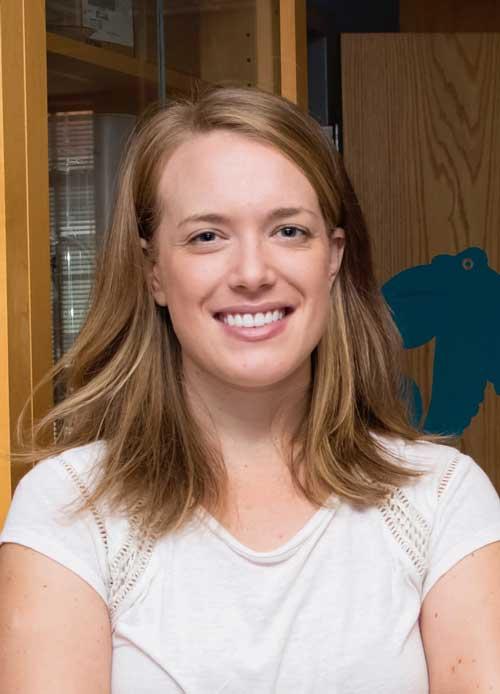
Kate Thomas
Biology
Katherine Goodman Stern Fellowship
I am interested in how animals in dimly lit environments use their eyes. My work combines behavior, morphology, computational modeling, and comparative evolutionary methods to explore the evolution and ecology of visual strategies and bioluminescence in deep-sea cephalopods.
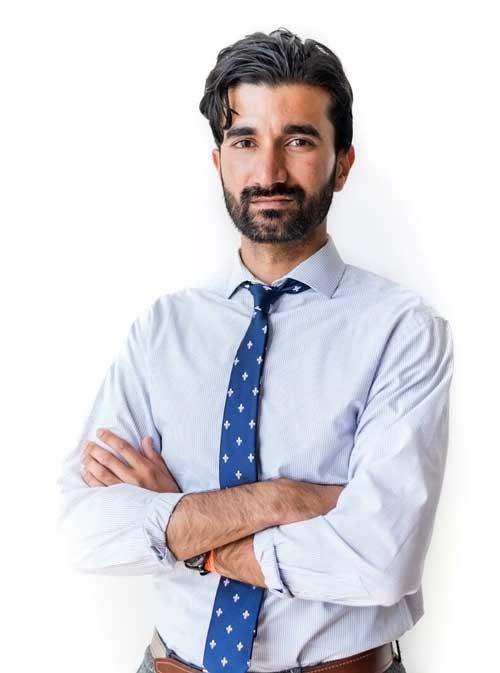
Faraz Usmani
Environmental Policy
International Dissertation Research Travel Award
I am an environmental economist. My research examines the relationship between access to modern energy services and economic development in low-income countries. With support from The Graduate School (in the form of an International Dissertation Research Travel Award), I will travel to Senegal to collect primary data on the energy-use patterns of rural households.
Ultimately, I aim to examine how variation in households’ preferences for their energy needs (such as the technologies and fuels they choose, and the tasks they choose them for) can undermine the success of policies aimed at delivering improved energy services that do not match their demands. This research is timely. Nearly three billion people (almost entirely in low-income countries) rely on dirty fuels and traditional stoves for their primary energy needs.
The adoption of energy access targets as part of the Sustainable Development Goals has thrust energy to the fore of development policy, with governments and international organizations alike mobilizing resources to ensure access for all. Yet evidence on the success of interventions that aim to increase adoption and use of modern energy technologies remains mixed. In this work, I look to evaluate the extent to which policymakers’ and practioners’ reliance on “silver bullets”—purportedly perfect energy technologies that eventually only cater to the needs of a few—might be to blame.
Dmitry Vagner
Mathematics
Bass Instructional Fellowship
In mathematics, one may study all kinds of differently flavored objects: shapes (spheres, tori, etc.); algebras, i.e. numbers (integers, rationals, etc.) with operations (addition, multiplication, etc.); ordered arrangements (lists, trees, etc.); and so on. Typically, a mathematical theory for one kind of object looks quite different from that for another kind.
Category theory is a partial remedy for this disunity. If logic aims to study the underlying principles that govern legal mathematical reasoning, category theory aims to study the overarching conceptual patterns that repeatedly emerge from, and perhaps even guide, mathematical reasoning. It achieves this by characterizing relationships (transformations, analogies, combinations, etc.) among mathematical objects without reference to the objects themselves. Often these abstract relationships can be depicted visually as diagrams whose intuitive manipulation corresponds to mathematically correct procedure. This is called diagrammatic algebra.
In one of my research projects, I have studied mathematical knots (tangled strings) via how they can be situated as the diagrammatic algebra for other objects. More recently, these fields have sparked a conversation about the foundations of applied mathematics. In the spirit of this vision, I have a paper published on a diagrammatic algebra for networks of systems. More recently, I have begun investigating the possibility of a categorical foundation for Bayesian statistical inference.
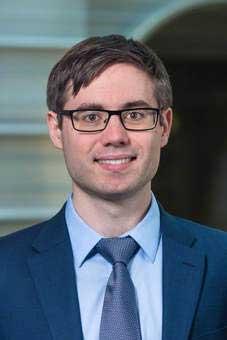
Jan Vogler
Political Science
International Dissertation Research Travel Fellowship
My dissertation aims to explain the enormous differences in the institutions of public administrations that we observe across countries. For instance, the public bureaucracy of the United States is very different from the German bureaucracy, and the structures of both deviate significantly from the Italian public administration. This is an important topic because the performance of public administrations has a direct impact on the quality of life of citizens and the implementation of public policies.
Modern bureaucracies were created in the 19th and early 20th centuries, and many of their institutions have persisted over time, meaning that we need to go back to their origins to understand parts of this variation. My approach is to consider the influence of socio-economic interest groups (such as the professional and industrial middle class) and the impact of imperialism on the development of early bureaucracies. Socio-economic groups shaped early public administrations in accordance with their interests and imperial powers imposed their own bureaucratic institutions on other countries. Both historical developments still have an impact on present-day bureaucratic structures.
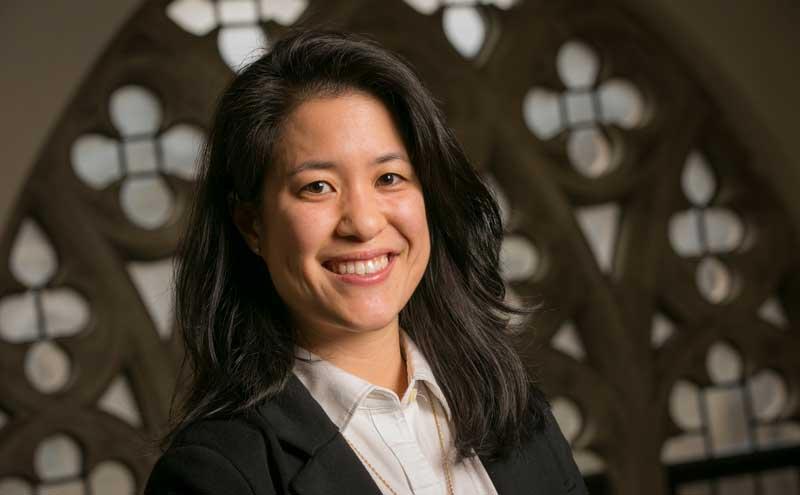
Mai-Anh Vu
Neurobiology
Katherine Goodman Stern Fellowship
Suppose you’re playing trivia and there’s a question you really want to know the answer to. Knowing that you’re about to get the answer to your burning question may prepare you to pay closer attention, resulting in better memory for that trivia fact. Cognitive neuroscience studies have shown that anticipation—this state of thinking that something will happen—is an important signal that interacts with motivation to shape learning and memory.
How might such motivational signals be represented in the brain? To investigate how anticipation is signaled in the brain, I take an interdisciplinary, integrative approach that combines experiments using functional magnetic resonance imaging (fMRI) in humans and in-vivo multisite electrophysiology in mice. This dual-pronged approach offers different levels of insight into the brain basis of anticipation. Humans are capable of complex tasks and can provide detailed subjective insight. Combined with fMRI, which records neural activity from the entire brain, such studies can relate rich behavioral data with neural signals from the entire brain. On the other hand, rodent electrophysiology, in which neural data is recorded from awake, behaving rodents via implanted electrodes, allows for a more direct readout of brain activity at an incredibly fast temporal resolution.
In a world where we are inundated with information, understanding the neural basis of anticipation and how it affects learning may offer insight on how to optimize learning.
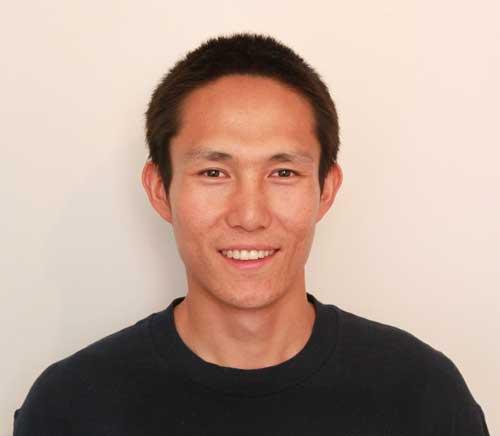
Tusi Wen
Political Science
International Dissertation Research Travel Award
Under authoritarian regimes, while political changes typically occur at a glacial pace, they may occasionally break out in a landslide as the masses become mobilized. Existing literature mostly emphasizes intra-elite power struggles (resulting in coup d’etat or the antagonistic interactions between unified elites and organized masses (resulting in popular uprisings) as the main driving forces behind political changes within authoritarian contexts. However, little work has systematically examined the interactions between elites and the masses while accounting for the internal dynamics within each collective entity. As a result, scholarship risks misconstruing the nature of different mass movements and mis-predict their political consequences.
My dissertation, “Revolution, Democratization, and the Paradox of Authoritarian Control,” remedies this intellectual gap by examining interactions both within and between authoritarian elites and the masses, thus providing a framework to better understand the inner-workings of authoritarian regimes, as well as their potential trajectories of political changes.
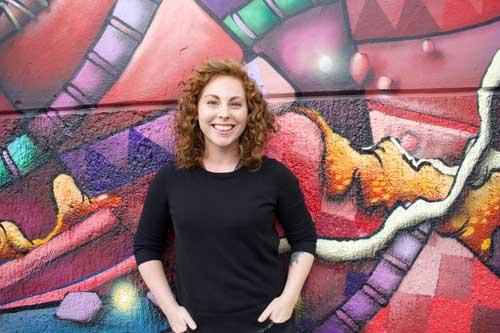
Farren Yero
History
Domestic Dissertation Research Travel Award
Immunization is a contested practice that compels extreme positions and inspires difficult questions about the ethics of preventative technology and the social and moral obligations physicians, governments, and citizens have to one another. My dissertation project—“Brazo-a-Brazo: Humanitarian Medicine and the Preservation of Empire, 1767-1841”—examines immunization as it developed within the Spanish Atlantic World.
By examining response to epidemic disease in Spain, Cuba, and Mexico, I show how concepts and practices of immunity shifted through critical moments in the colonial and revolutionary history of the Americas. I argue that the deployment of immunization cannot be understood simply as a means of preventing and controlling epidemic infection. Rather, its deployment reveals how the preservation of human life, through aid and health intervention, sustained and justified imperial control of bodies and environments.
Immunity was introduced and endorsed by Spanish medical authorities as a means of redemption—socially, spiritually, and politically. Reformers proclaimed immunity as a form of divine providence and moral obligation, mapping public health interventions onto the infrastructure of spiritual conversion. By tracing the threat of contagion, and the promise of salvation, across the Spanish Atlantic, my research analyzes how immunity, as both a scientific and a Christian practice, took shape under the collapse of empire and the inception of national public health.

Ashley Rose Young
History
Bass Instructional Fellowship
My doctoral dissertation, “Nourishing Networks: Provisioning New Orleans in the Atlantic World,” examines how daily practices of food production and distribution shaped the development of New Orleans’ public culture from the colonial era through the mid-20th century. An exploration of these relationships, both amicable and confrontational, represents longstanding dynamics in the United States between those who made and distributed food and those who consumed it. These dynamics served as building blocks of identity on both an individual and group level in the public sphere.
As “Nourishing Networks” demonstrates, the food economy provided the disenfranchised—people of color, women, and recent migrants—a means to connect themselves to the public culture of the city, despite legal prohibitions intended to keep them on the margins. Food, therefore, allows us to explore the fluidity of New Orleans’ public culture and observe the power of disenfranchised groups that would otherwise be obscured by the structures of Jim Crow.

Lifeng Yuan
Molecular Cancer Biology
International Dissertation Research Travel Award
My thesis research project focuses on cellular senescence, which represents a specific status of cells that undergo irregularity after confronting certain types of stresses such as DNA damage and oxidative stress. Recently it has been revealed that dysfunctional senescent cells are accumulated during the aging process that would act as detrimental factors contributing to geriatric disorders. Considering aging is the major risk factor for multiple types of diseases including heart disease, stroke, Alzheimer’s and cancer, a better mechanistic understanding of cellular senescence towards potential development of rejuvenated therapeutics could help to reduce the occurrence of cancer and other severe geriatric diseases, and ultimately support healthy aging and prolong the healthy lifespan.
It has been hypothesized that for the people who can live to or beyond the age of 100 years (centenarian), they may be protected from diseases by certain “magic” machinery, and therefore this group of people represent the promising model for illuminating anti-aging mechanisms. To further investigate the connection and/or association between our newly identified signaling pathway regulating cellular senescence and human longevity, I have been supported by the Duke Graduate School to work on-site with a collaboration group that is located in the southwest of China near the Indo-Burma biodiversity hotspot focusing on understanding the centenarians’ longevity and healthy aging.
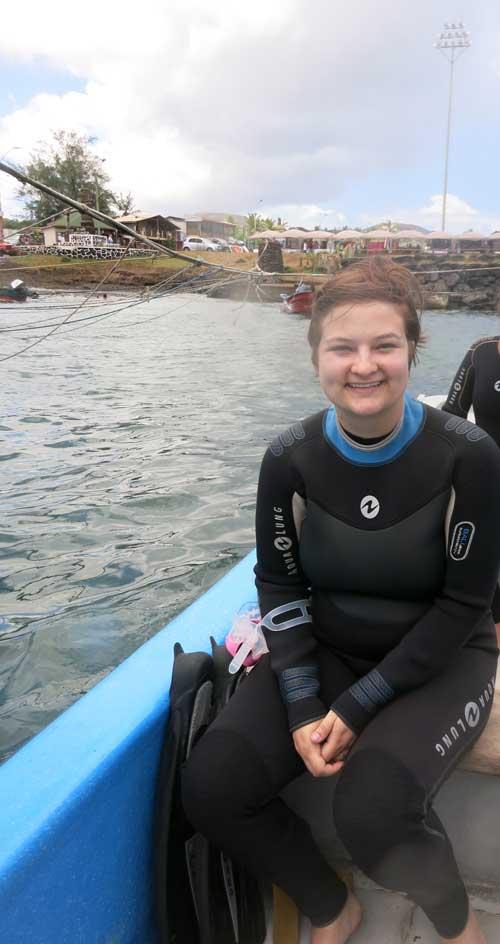
Sarah Zigler
Marine Science and Conservation
James B Duke International Dissertation Research Fellowship
I am studying the intersection between the model of large scale marine protected areas (LSMPAs) and indigenous social movements in Rapa Nui (Easter Island, Chile).
Firstly, I am exploring how the model of the LSMPA changes as it encounters the particular local history of Rapa Nui (e.g. colonial legacies, indigenous social movements for self-determination, the history of terrestrial and marine conservation on the island), and what the mutation of the LSMPA model can teach us about how to do marine conservation well for people and environments.
Secondly, I am studying indigenous social movements’ engagement with marine conservation in Rapa Nui by observing social movement strategies for marine conservation that also supports indigenous Rapanui conceptions of territory and self-determination. Some of these strategies include: Polynesian networking in spaces of international conservation meetings, discursive strategies articulating identity and territory, and engagement with international discourses of indigenous and human rights.
Lastly, I am studying what outcomes these strategies produce for indigenous self-determination in Rapa Nui, and how marine conservation and the LSMPA model may (or may not) be a novel space for enactment of “decolonial” conservation, meaning marine conservation that is linked with Rapanui indigenous concepts of territory and self-determination.